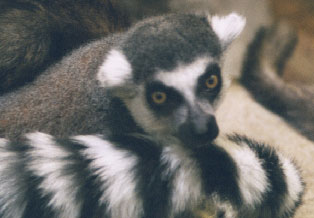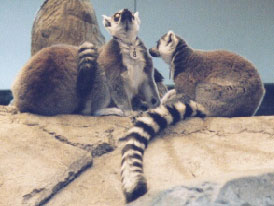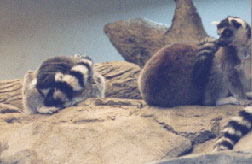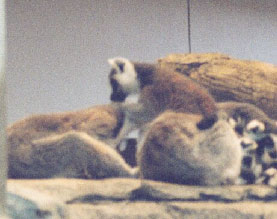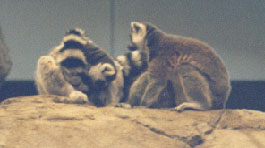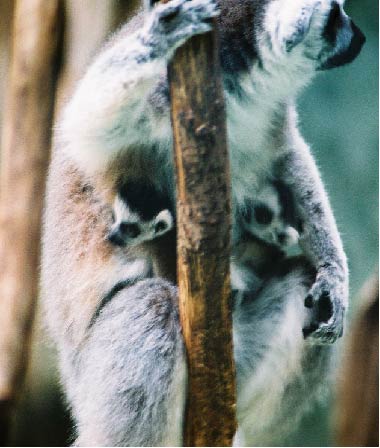The average body mass for adult males is around 3 kilograms, and for females it is around 2 kilograms. Like the true lemurs this species has a rhinarium and binocular vision. Has a long and bushy tail that has rings on it, that is used in visual displays.
